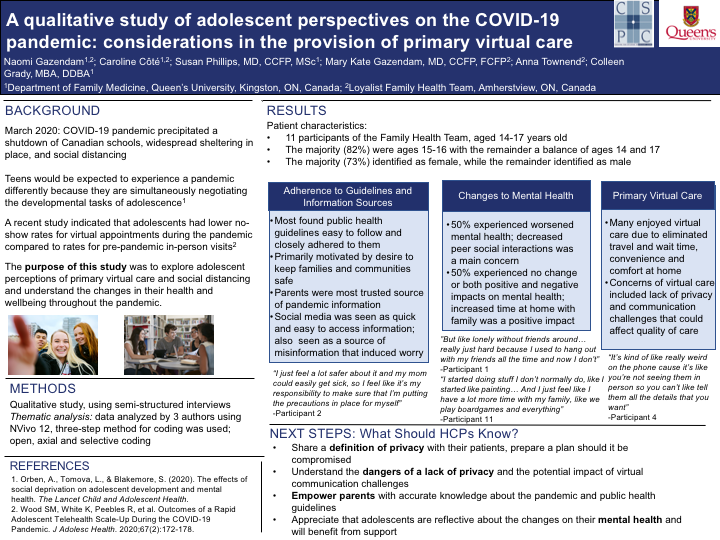PCR002: A qualitative study of adolescent perspectives on COVID-19 pandemic: considerations in the provision of primary virtual care
Colleen Grady, DBA; Caroline Cote, BSc; Naomi Gazendam; Mary Kate Gazendam, MD, CCFP, FCFP; Susan Phillips; Anna Townend

Jack Westfall
jwestfall@aafp.org 11/19/2021Great poster and abstract. Thanks